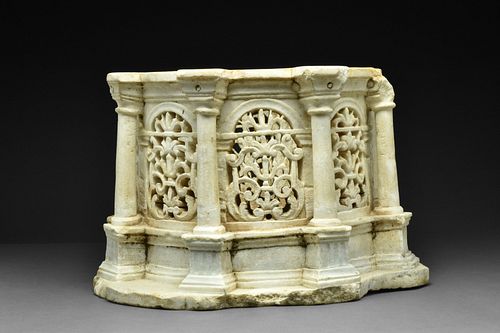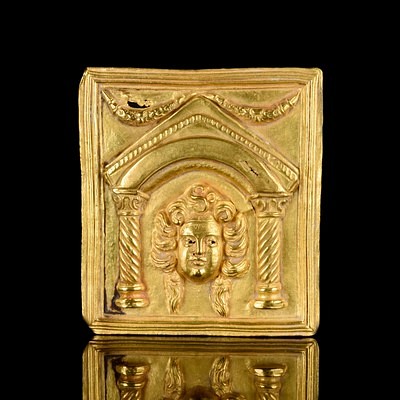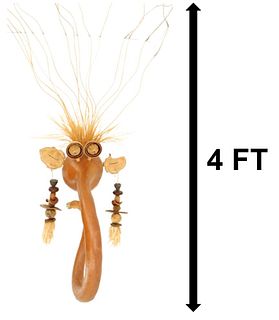BYZANTINE MARBLE RELIQUARY WITH PILLARS
Lot 8
Categories
Estimate:
GBP£15,000 - GBP£30,000
$19,230.77 - $38,461.54
Absentee vs Live bid
Two ways to bid:
- Leave a max absentee bid and the platform will bid on your behalf up to your maximum bid during the live auction.
- Bid live during the auction and your bids will be submitted real-time to the auctioneer.
Bid Increments
| Price | Bid Increment |
|---|---|
| GBP£0 | GBP£10 |
| GBP£100 | GBP£10 |
| GBP£200 | GBP£20 |
| GBP£500 | GBP£50 |
| GBP£1,000 | GBP£100 |
| GBP£2,000 | GBP£200 |
| GBP£5,000 | GBP£500 |
| GBP£10,000 | GBP£1,000 |
| GBP£20,000 | GBP£2,000 |
| GBP£50,000 | GBP£5,000 |
| GBP£100,000 | GBP£10,000 |
| GBP£200,000 | GBP£20,000 |
| GBP£1,000,000 | GBP£50,000 |
About Auction
By Apollo Art Auctions
Oct 9, 2022
Set Reminder
2022-10-09 07:00:00
2022-10-09 07:00:00
America/New_York
Bidsquare
Bidsquare : ANCIENT ART & ANTIQUITIES
https://www.bidsquare.com/auctions/apollo-art-auctions/ancient-art-antiquities-10431
Apollo Art Auctions is delighted to present a magnificent 9th of October 2022 sale of Ancient Art & Antiquities. The sale is divided into three sections: Classical and Egyptian, Masterpieces of Ancient Asia and Medieval Antiquities and Ancient Weaponry. Apollo Art Auctions enquiries@apolloauctions.com
Apollo Art Auctions is delighted to present a magnificent 9th of October 2022 sale of Ancient Art & Antiquities. The sale is divided into three sections: Classical and Egyptian, Masterpieces of Ancient Asia and Medieval Antiquities and Ancient Weaponry. Apollo Art Auctions enquiries@apolloauctions.com
- Lot Description
Ca. 300-900 AD A drum-shaped marble chest in the form of a tholos surrounded by eight columns with simple capitals, arcades between the pillars with elegant openwork foliate tracery; each tiered capital with a vertical socket for the attachment of a lid; the interior showing tooling. Reliquaries were containers for storing and displaying relics, such as bones, pieces of clothing or an object associated with a saint or other religious figure, in a church from the early Christianity onwards. Starting from the simple forms of chests in late Antiquity, they developed to various types depending on the relics they contained. During the Reformation, a large number of reliquaries were destroyed by Calvinists and as a result the number of original, especially early specimens, is limited. Interestingly, our reliquary has a hole in its bottom, which can be related to the practice of pouring oil into a container of relics of a saint or saints, which was then collected into pilgrim flasks. See Boehm, B.D., 'Relics and Reliquaries in Medieval Christianity' in Heilbrunn Timeline of Art History, New York, 2000; Abou-El-Haj, B., The Medieval Cult of Saints: Foramations and Transformations, Cambridge, 1994; Bagnoli, M. et al. eds., Treasures of Heaven: Saints, Relics, and Devotion in Medieval Europe, Cleveland, 2010; Weitzmann, K. ed., Age of Spirituality: Late Antique and Early Christian Art, Third to Seventh Century, New York, 1979, no.569-575. Item comes with a professional historical report from Ancient Report Specialists. Size: L:250mm / W:375mm ; 25.35kg Provenance: Property of a London gentleman; before that in the private collection of a Kensington collector; acquired in Austria in 1993; previously in the Trimbacher collection; formerly acquired in Germany in 1980.
- Shipping Info
-
We offer in-house packing and international shipping at discounted rates.
-
- Buyer's Premium



 EUR
EUR CAD
CAD AUD
AUD GBP
GBP MXN
MXN HKD
HKD CNY
CNY MYR
MYR SEK
SEK SGD
SGD CHF
CHF THB
THB














